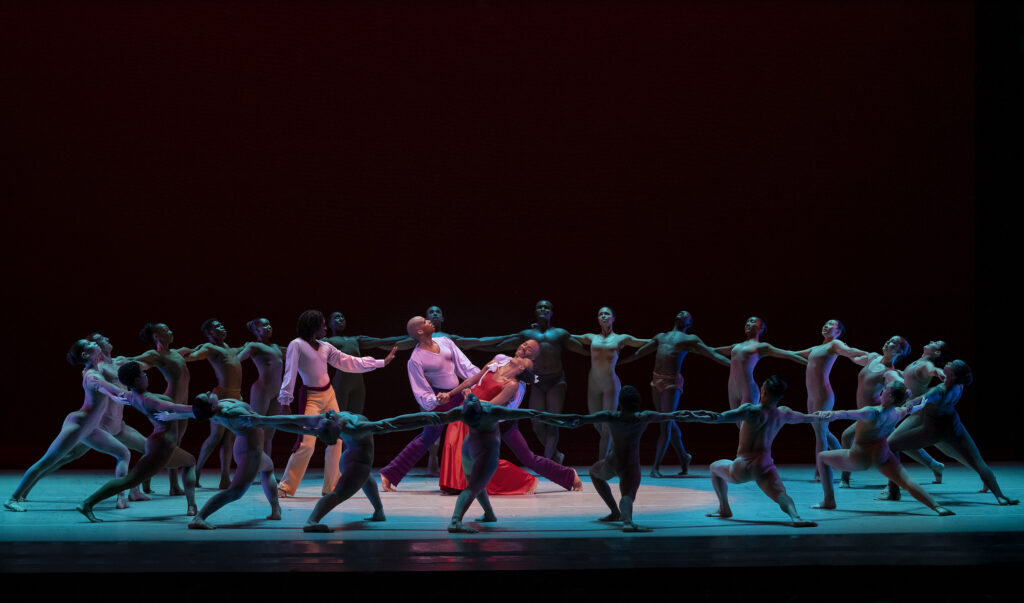There’s an inherent tension anytime a new dancer breathes life into an existing work onstage. Interpreting a role is always a push and pull, says Ronni Favors, rehearsal director for Alvin Ailey American Dance Theater, between what the performer brings and what was already there. “Alvin said, ‘I like dancers who can color movement, who can bring themselves to the movement,’ ” recalls Favors, a former Ailey dancer herself. “He also said, ‘Dancers, please do my choreography.’ ”
It can feel like a tall order to do both, whether you’re portraying a character in a full-length narrative ballet, tackling rep by a late icon like Ailey, George Balanchine, or Martha Graham, or stepping into a new cast of a recent work by a contemporary choreographer. Striking the right balance is a delicate dance that depends on many factors, including the piece, the dancer, and the rehearsal director, répétiteur, or coach guiding them through the process.

Be Curious and Courageous
You can’t interpret what you don’t understand. Favors tells dancers about Ailey and other choreographers whose work she’s staging, offering her own memories and stories. But “part of my mission is to not only share what I know, but to encourage dancers” to seek out more, Favors says, such as a choreographer’s influences and training and the context in which they were creating a particular piece.
 Ailey II dancers and Ailey School students in Alvin Ailey’s Memoria. Photo by Paul Kolnik, Courtesy AAADT.
Ailey II dancers and Ailey School students in Alvin Ailey’s Memoria. Photo by Paul Kolnik, Courtesy AAADT.
Being curious in the rehearsal process takes courage, as does experimenting with ways to make a role your own. You could play with how you use your breath, what you do with your eyes and focus, and how you carry your neck and upper body, says Favors. You can also make musical choices, says Susan Shields, director of George Mason University’s School of Dance, like whether you hit the top or back part of a beat.
As a dancer, you should have an opinion or a point of view, says Julie Kent, former American Ballet Theatre principal dancer and current Houston Ballet co-artistic director, and “be brave in the exploration process, because that’s where the real discoveries are made.”
Connect Emotions and Experiences
When Shields first joined the Lar Lubovitch Dance Company, she had to step out of the comfort zone of her ballet training. “I did my best to look just like the girl next to me,” she says. When she had an opportunity to dance the pink girl in Lubovitch’s A Brahms Symphony, she initially tried to copy the way she’d seen her dance idol, Christine Wright, do it.
But one of the keys to interpreting a role successfully, Shields learned, is to let yourself be vulnerable. In this case, she had to open herself up and tap into grief. “If you allow yourself to emotionally go there while you’re dancing it, it becomes your own,” she says. Even if you’re doing the same steps, “that automatically makes it different.”
Favors discourages dancers from plotting out too rigid a narrative for themselves in works that don’t have one. “I encourage them to create more of a mood board,” she says, drawing on what they’ve learned about the choreographer and work and making connections to their own lived experiences. “You’re creating a world that you can believe in, and when you do that, we see it,” she says.
To successfully conjure that world and to bring honest expression to your movement, Favors says, you also need to get out of the studio and live. She recalls Ailey telling her early on to “get your heart broken, go out, make mistakes, meet people, do things, fall on your face, get back up.” Because as he put it, “you cannot dance about dance. You have to dance about life.” The more experiences you have to draw from and the more actively you can engage your imagination, the better you can develop a world onstage—and the more you can make a role your own.
Trust the Collaboration
“Even if a dance is set,” Favors says, “it’s still a living, breathing entity and it’s inhabited by living, breathing entities.” Unless you’re performing a solo, your interpretation will be influenced by your fellow dancers. In a story ballet like Manon, for example, Kent says the title character will react differently if Des Grieux is played as a hopeless romantic versus a more aloof suitor.
 Julie Kent rehearsing Balanchine’s Stars and Stripes with Houston Ballet. Photo by Lawrence Elizabeth Knox, Courtesy Houston Ballet.
Julie Kent rehearsing Balanchine’s Stars and Stripes with Houston Ballet. Photo by Lawrence Elizabeth Knox, Courtesy Houston Ballet.
The other, central artistic collaboration in developing an interpretation of a role is with the coach, rehearsal director, or choreographer in the front of the room. “You have to be communicating with that person. You have to be willing to take what they are asking for, put it into your mind and body, and then you give something back,” Kent says. “The more you give them back, the more they’ll give you back, because you inspire a dialogue.”
They are your sounding board and safeguard as you figure out where the boundaries of individual expression are. “If they’re saying, ‘Yes, yes, more, go for it,’ ” Kent says, “then that’s your direction. If they’re like, ‘I told you this is seven-eight, and you are not doing it,’ then it’s on seven-eight, there’s no interpretation,” she says. “At the end of the day, you have to build that trust in yourself and trust in the person that you’re working with.”
Time spent in the rehearsal process on the nuances of expression is essential to artistic growth and development. “That performance lasts for 15 minutes, 20 minutes, 30, an hour,” says Kent. “The actual work—the process—is the reward. So love it and enjoy it.”




GIPHY App Key not set. Please check settings